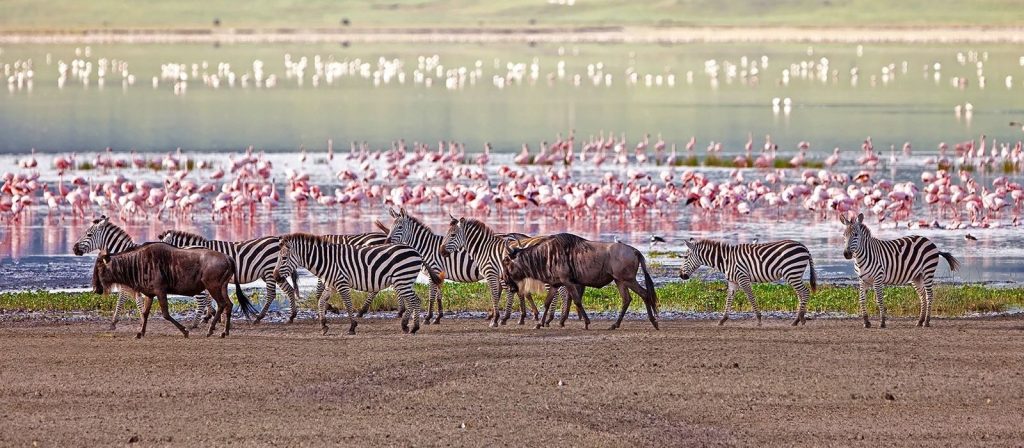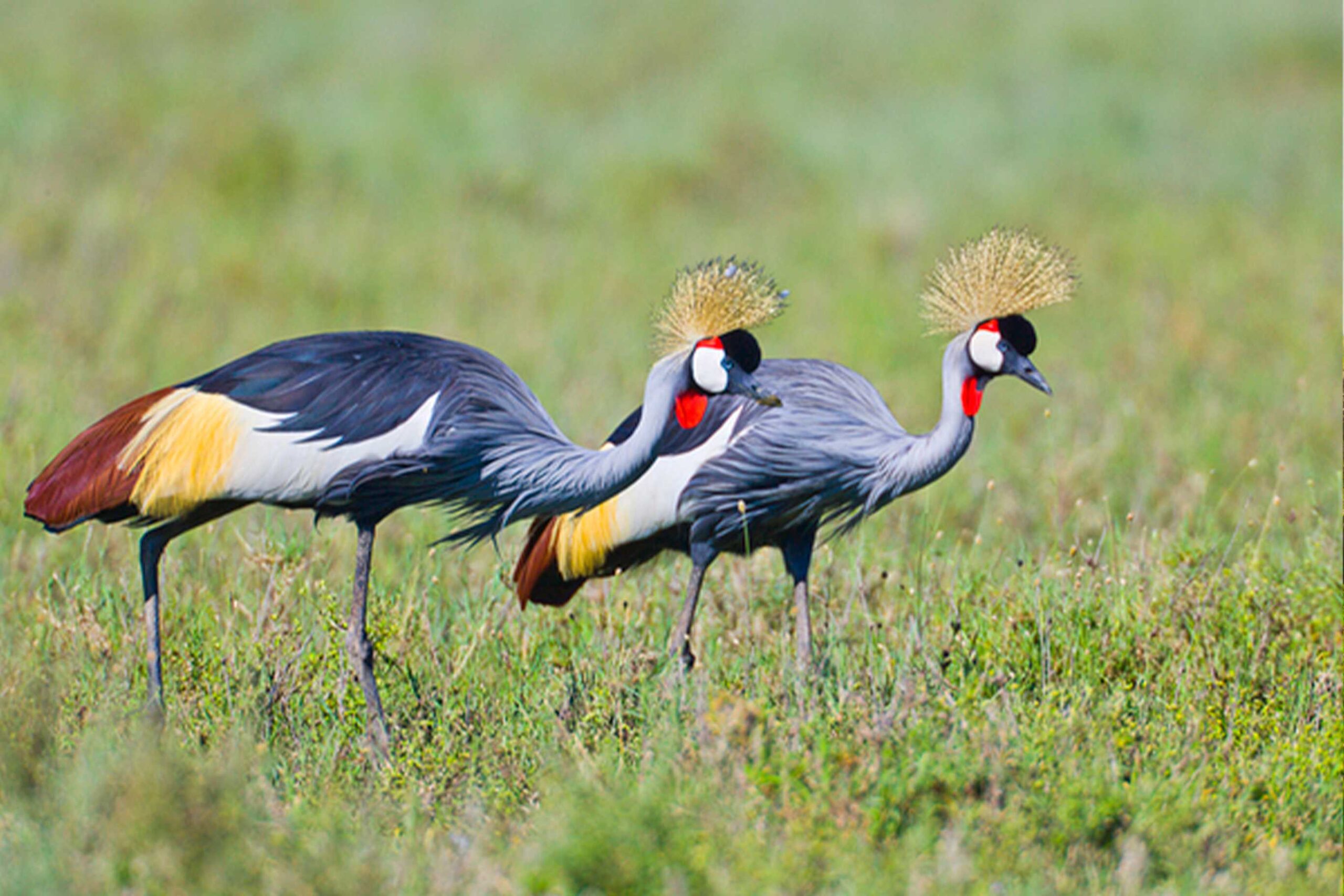African Birding Tours Offered by Reputable Tour Operators
----
Tanzania Bird Watching Safaris offer an unforgettable experience for bird enthusiasts, showcasing over 1,100 bird species across diverse habitats. From the flamingo-filled shores of Lake Manyara and the Serengeti plains to the lush forests of the Eastern Arc Mountains and the wetlands of Selous, Tanzania is a birder’s paradise.
Endemic species like the Udzungwa Forest Partridge and the Pemba Sunbird, along with migratory flocks from Europe and Asia, make every safari unique.
Expert local guides lead guests through prime birding spots, ensuring remarkable sightings and in-depth insights into each species’ behavior and ecology. Whether exploring on foot, by 4×4, or by boat, bird watchers enjoy close encounters with Tanzania’s vibrant avifauna amid breathtaking landscapes.
Ideal for both amateur and seasoned birders, Tanzania Bird Watching Safaris combine exceptional wildlife viewing, photography opportunities, and rich cultural experiences, making it one of Africa’s premier destinations for ornithological adventures.
What to Expect on a Bird Watching Safari in Tanzania?
On a Tanzanian bird-watching safari, expect to see a vast array of resident and migratory bird species across diverse habitats like wetlands, forests, and savannas. You’ll participate in guided walks, game drives, and boat safaris, and potentially night drives, to spot a variety of birds from large ostriches and raptors to small, colorful species. Our Tanzania bird watching safaris packages accommodations range from comfortable lodges to remote tented camps, and it’s common to see other wildlife like elephants and lions alongside the birds.
Best time to go: The wet season (November to May) is ideal for Tanzania bird watching safari tours viewing migratory birds, while the dry season concentrates birds around permanent water sources, making them easier to best tanzania bird watching safari spot. An individual private Tanzania bird watching safari is suitable for families and kids, honeymooners/couples, and seniors, with a top selection ranging from budget, mid-range, to luxurious options.
Do you know where to go on a Tanzania Bird Watching Safari?

Arusha National Park
An Arusha National Park top destination for bird watching safari, offers a diverse experience with both forest and aquatic bird species, including flamingos, herons, and ducks. The park is a biosphere reserve that includes the alkaline Momella Lakes, which are fed by algae and attract a large number of waterbirds. The park is also home to other wildlife, such as giraffes, zebras, and monkeys, making it a popular day trip from Arusha.
Accessibility: The park is easily accessible for a day trip from Arusha, making it a convenient option for those with limited time.
Planning your safari
- Best time to visit: The wet season, from November to March, is often best for birding as migratory birds are present and resident species are in breeding plumage.
- What to expect: You will likely see a mix of large mammals and a wide variety of birds in a single day.
- Activities: Safaris can involve game drives and guided walking safaris.
- What to bring: Binoculars and a field guide will enhance your experience, as will a camera to capture the diverse avian life.
Facts: Arusha National Park is one of the mysterious national parks located in Northern Tanzania, Northeast of Arusha city. It is famous for being a home to Tanzania’s second-highest mountain, Mount Meru, and the world’s largest population of giraffes. It covers 552 square kilometers.
Tarangire National Park
Tarangire National Park is famous for its large elephant herds, iconic baobab trees, and incredible birdlife. It has the highest concentration of elephants in Tanzania, with large herds gathering at the Tarangire River during the dry season. The park’s diverse landscape is dotted with massive, ancient baobab trees, and it is a birdwatcher’s paradise with over 550 bird species.
- Elephants: The park is home to one of the largest elephant populations in Africa, with herds of up to 300 elephants congregating along the Tarangire River during the dry season.
- Baobab trees: Majestic and ancient baobab trees dominate the landscape, creating a unique and picturesque environment.
- Birdlife: Tarangire is a haven for birdwatchers, with swamps that host a huge number of breeding bird species, and over 550 species in total, including birds such as ostriches, Starlings, Raptors and Vultures, Hornbills, Yellow-collared Lovebird, Kori Bustard, secretarybirds, lilac-breasted rollers, and hammerkop, one of the top bird watching spots in Tarangire National Park.
- Diverse wildlife: The park supports a wide array of wildlife, including lions, leopards, cheetahs, zebras, giraffes, and wildebeests.
- Tree-climbing lions: It is one of the few places in Tanzania where you can see lions that have a habit of climbing trees.
The best time for birding is during the wet season from November to April, when migratory birds arrive and resident birds are in breeding plumage.

Lake Manyara National Park
Lake Manyara National Park is a national park in Tanzania located between Lake Manyara and the Great Rift Valley in the Arusha and Manyara Regions. It is administered by the Tanzania National Parks Authority, and covers an area of 325 km², including about 230 km² of lake surface.
The rift valley escarpment wall gives the Park a spectacular view. Famous for its tree-climbing lions, the Park, with its underground water forest, supports many lives, especially the primates. Hot water springs are one of the rare geological features that give visitors to this area an opportunity to explore.
A bird watching tour in Lake Manyara National Park is an exciting safari activity that offers a chance to see over 400 bird species, including large numbers of flamingos, and other aquatic birds like pelicans, cormorants, hornbills, eagles, and kingfishers.
The best time for this tour is during the wetter season from November to May when migratory birds are present, and flamingos congregate at the lake. Tours can involve driving through different park habitats, visiting the hippo pool, and potentially exploring the unique treetop walkway for a canopy view.

Serengeti National Park
Serengeti National Park is a vast World Heritage Site in Tanzania, celebrated for the Great Migration of over two million wildebeest, zebras, and gazelles. Spanning nearly 15,000 square kilometers, it features diverse landscapes like grasslands, savannas, and woodlands, and is home to a rich ecosystem of predators like lions, leopards, and cheetahs, as well as other animals like elephants and giraffes. Established in 1951, it is Tanzania’s oldest national park and part of a larger ecosystem connected to Kenya’s Maasai Mara National Reserve.
Serengeti National Park is a top destination for bird watching, home to over 500 bird species, including the Kori Bustard, Secretarybird, and Fischer’s Lovebird. Birding is excellent year-round, but the dry season (June-October) is ideal for combining with wildlife viewing, while November to April is best for migratory birds and nesting plumage.
Ngorongoro crater
The Ngorongoro Crater is a vast, intact volcanic caldera in northern Tanzania, famous for its unique ecosystem and dense wildlife population. Formed when a volcano collapsed 2–3 million years ago, it is now a UNESCO World Heritage Site and one of Africa’s Seven Natural Wonders. The crater floor, which is 610 meters (2,000 feet) deep and spans about 260 square kilometers (100 square miles), supports a high concentration of animals, including the “Big Five”: lions, leopards, elephants, buffaloes, and rhinos. It is also home to other species like zebras, wildebeest, hippos, and flamingos, along with over 500 bird species.
Ngorongoro Crater is a top destination for birdwatching, home to over 500 bird species due to its diverse habitats like grasslands, wetlands, and forests. Key species to look for include the Kori bustard, secretary bird, grey crowned crane, and various flamingos. Visit during the wet season (September to April): This is the best time to see flocks of flamingos.
Lake Natron | Salt Flats, Soda Lake, Rift Valley
Lake Natron is a shallow, highly alkaline soda lake in northern Tanzania, located in the Gregory Rift at the foot of the Ol Doinyo Lengai volcano. Its extreme salinity, with a pH level that can exceed 12, is caused by high evaporation, leading to mineral deposits and making the water inhospitable for most life except salt-loving microorganisms like cyanobacteria, which give the lake its red and orange colors. Despite its harshness, it is a vital breeding ground for millions of lesser flamingos.
Lake Natron is a top Tanzania Birding Safari Experience destination for bird watching, primarily due to being the most important breeding site for lesser flamingos in East Africa. The lake’s high alkalinity supports the algae they feed on, attracting millions of flamingos between September and April, and visitors can also see other species like pelicans and waders.
How to book a Tanzania bird watching safari?
To book a Tanzania bird watching safari, start by choosing a reputable tour operator specializing in birding adventures. Select your preferred destinations, such as Serengeti, Ngorongoro, or Lake Manyara. Decide the best travel season—typically November to April for migratory birds. Confirm package details, including accommodation, transportation, and guided tours. Once satisfied, make a deposit or full payment to secure your spot. Always check travel requirements and pack suitable birding gear before departure.
What to Pack for a Tanzania bird watching safari?
For a Tanzania bird watching safari, pack lightweight, neutral-colored clothing, a wide-brimmed hat, and sturdy walking shoes. Bring quality binoculars, a camera with zoom lens, and a field guide for bird identification. Include sunscreen, insect repellent, and reusable water bottle. Pack light rain gear, especially in wet seasons. Don’t forget travel documents, medications, and a small backpack for daily excursions. Layered clothing helps adapt to changing temperatures during early mornings and evenings.
How Much does a Tanzania bird watching safari Cost?
A Tanzania bird watching safari typically costs between $800 and $1600 per person per day, depending on accommodation, destinations, and season. Budget tours may start around $5,500 for 10 days, while luxury safaris can exceed $25,000. Prices usually include park fees, guided birding tours, transport, and meals. Private or customized safaris cost more but offer flexibility and expert ornithologists. Always compare packages and inclusions before booking to ensure the best value for your birding adventure.
Tanzania bird watching safari Reviews
Tanzania bird watching safari reviews are overwhelmingly positive, with reviewers frequently highlighting the expertise and passion of local guides, the high number of species spotted, and the stunning landscapes. Key locations mentioned for excellent birding include Tarangire, Lake Manyara, Ngorongoro, and Serengeti, which offer a wide variety of habitats and species, with some reporting seeing over 100 species in a single day at lodges like Tarangire Safari Lodge. Many reviews also praise the overall safari experience, including the kindness of local people and the organization of the tours.
Tanzania is one of the finest bird-watching destinations in Africa, with 1140 species, including 200 migrants and 74 marine birds present. Tanzanian avian safaris are best in the rains for migrants and residents in breeding plumage. The preeminent birding locations include Arusha National Park, with 400 birds in a diversity of habitats contained in a small area. You may observe a white-faced whistling duck with its whistling three-note lament, or a dusky flycatcher.
